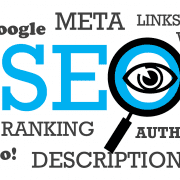The Problem With Information
Information, when used to influence or sell, advise or share, has cost us untold loss in business and relationships. It actually causes resistance.
Information Causes Resistance
For some reason, we maintain a long-standing belief that if we offer the right people the right information at the right time, presented in the right way, those it’s intended to influence will be duly impressed and adopt it. But that’s erroneous. Just think how often we:
- patiently explain to our kids why something is bad for them,
- present a well-considered idea to our boss,
- share an important idea with a friend,
- offer great data as rationale to lead change initiatives,
- offer brilliant pitches to prospects to explain our solution
and how often our brilliant delivery and logical (and probably accurate) argument is not only ignored but rebuffed. Certainly the ineffective behaviors continue regardless of the logic of the information we offer. Are they just stupid? Irrational? We’re ‘right’ of course: we’ve got the rational argument and data points; what we have to share is what Others need to hear.
But is this true?
It’s not. And we’re wrong. We’re actually creating resistance, losing business, destroying relationships, and impeding change.
Here’s why. When we present rational data, or make arguments based on logic or wisdom or knowledge, and hope it will sway an opinion or get a new decision made, we’re putting the cart before the horse. While the data itself may be important, we are merely using our own biases as the motivation, not to mention our timing may be inappropriate. You see, until there’s internal buy-in for change people have no place to put the information.
We believe that part of our jobs as leaders, sales professionals, coaches, managers, or even parents is to be the arbiters of change, with information the main ingredient. But information in and of itself does not teach someone how to change: information promotesknowledge that may not be understood or pursued by that person at that time. Change requires a systems overhaul.
Let me explain. Everyone – people and teams, companies and families – possesses unique internal beliefs, values, histories, biases (systems) that are idiosyncratic and determine our behaviors. Indeed, these internal systems are so clearly defined and defended that we don’t even know how to listen when information is offered that’s outside our conventional thinking. Regardless of how important our information is, it will be resisted until/unless there is internal buy-in for it.
Offer Information Only When System Ready for Change
It is only when parts of the system seek a new level of excellence and can figure out how to change without disruption will any sort of change be considered, regardless of our initiatives as outsiders to influence the change. If the system had recognized the need to change and knew how to fix it congruently they would have fixed the problem already.
At the point the need for change is considered, even by a small part of the system, the system must get buy-in from everything and everyone that will touch the new solution and knows how to change its underlying rules in a way that insures minimal disruption. In other words, no buy-in/no agreed-upon safe route forward = no change considered = no information accepted: the information doesn’t fit anywhere, can’t be heard, can’t be understood. We end up pushing valid data into a closed system that doesn’t recognize the need for it.
Telling kids why they should clean their rooms, telling prospects why your solution is better, telling managers to use new software doesn’t create the hoped-for change, regardless of how cogent the information except where the kids, buyers, managers were already set up to/seeking change and know how to move forward congruently (i.e. the low hanging fruit).
Here are a couple of simple examples.
- As you run out the door to get your daughter to school your spouse says, “I think we should move.” Huh! “We’ll speak more tonight,” you reply. On your way home you notice a great house for sale and you buy it. Do you think the information about the house is relevant to your family at that point (even if it’s the perfect house)?
- You and your team are getting ready to launch a new product you’ve been developing for two years. Your boss tells you the company has been bought out and it may affect the launch, certainly effects next year’s budget, your work location, and the team. Then a sales person calls selling team building software. Do you think the information about the software is relevant at this point (even if it’s a perfect solution)?
- You’re a consultant hired to lead a team through a reorganization. The team is stable, has been working successfully together for three years and enjoys great productivity and camaraderie. Do you think the information about the rationale of reorganization will be adopted effortlessly and effectively?
It’s not about the need or efficacy: change cannot happen until the system knows who or what:
- will be affected by the new solution;
- an acceptable solution should be that considers all;
- the criteria that must be met;
- the parameters for change to ensure minimal disruption;
- the level of buy-in or change necessary;
- the new rules and norms that must be adopted.
As I say in Dirty Little Secrets: the system is sacrosanct (Read this book to understand each stage of decision making.). We learned about homeostasis in 6th grade: anything that is seen to be pushing the system out of balance will create resistance. Giving information too early merely causes resistance as the system fights for balance. And so, our brilliant, necessary, cogent information gets ignored, resisted, objected to, or misunderstood and we must handle the ubiquitous objections and resistance that we have created (and sadly miss real opportunities to facilitate change). Hence long sales cycles/lost sales and implementation problems, ignored advice, and lost opportunities. So: manage change first to set up the buy-in; then offer information.
Conventional sales, marketing, training, coaching, parenting, and leadership models use sharing and gathering information at their core. I’ve developed a model called Buying Facilitation® which is a generic decision facilitation model that enables a system to manage change and manage all of the behind-the-scenes elements needed to garner buy-in first; information is offered once there is agreement for adoption – and by the time you offer it, there is already eagerness for change. If you’re a coach, negotiator, seller, purchasing agent, leader, doctor, or implementer add it into your current skills. Then when it’s to offer information, your clients will be ready for it and eager to accept it.
About the Author

and Dirty Little Secrets: Why buyers can’t buy and sellers can’t sell and what you can do about it
.
To contact Sharon Drew at sharondrew@sharondrewmorgen.com or go to www.didihearyou.com to choose your favorite digital site to download your free book.












Leave a Reply
Want to join the discussion?Feel free to contribute!